The Intel Compute Stick (Cherry Trail) Review
by Ganesh T S on January 14, 2016 8:00 AM EST- Posted in
- Systems
- Intel
- Cherry Trail
- HDMI Stick
- CES 2016
- Compute Stick
Power Consumption and Thermal Performance
The power consumption at the wall was measured with a 1080p display being driven through the HDMI port. In the graphs below, we compare the idle and load power of the Intel PPSTK1AW32SC with other low power PCs evaluated before. For load power consumption, we ran Furmark 1.15.0 and Prime95 v28.7 (32-bit) together.
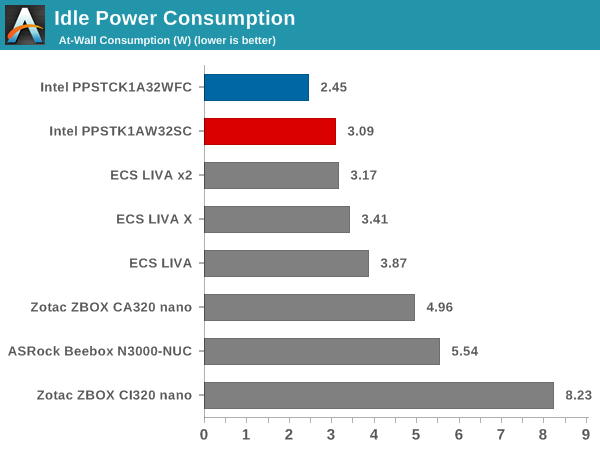
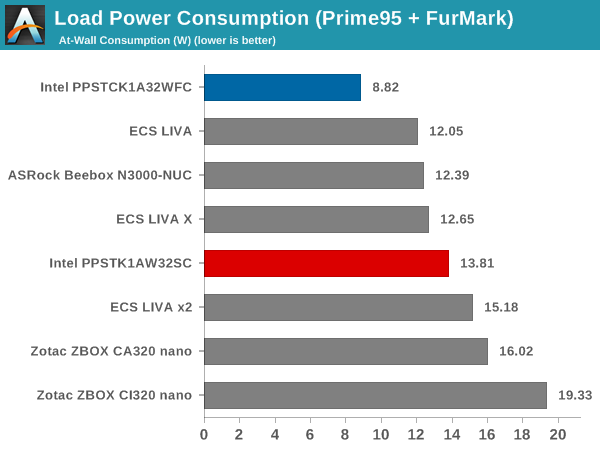
Compared to the Bay Trail Compute Stick, the Cherry Trail one has higher idle and load power consumption numbers. Given the upgraded Wi-Fi, the idle number can probably be justified. The load number is more due to the upgraded GPU which delivers much better performance while also consuming as much power as possible while staying within the acceptable thermal envelope.
Our thermal stress routine starts with the system at idle, followed by 30 minutes of pure CPU loading. This is followed by another 30 minutes of both CPU and GPU being loaded simultaneously. After this, the CPU load gets removed, allowing the GPU to be loaded alone for another 30 minutes. The various clocks in the system as well as the temperatures within the unit are presented below.
According to the official specifications, the junction temperature of the Atom x5-Z8300 is 90 C. The thermal solution is able to keep all temperatures around the 80C mark without excessive throttling. In the absence of any GPU loading, the CPU cores maintain a 1.6 GHz speed. We didn't observe the cores operating at the maximum burst frequency at all (1.84 GHz). With GPU loading into the picture, the cores can drop down to as low as 900 MHz even with the CPU load active. The GPU shunts between 380 MHz and 500 MHz depending on the load and available thermal headroom. One disappointing aspect is that the idling temperature of 57 C for the CPU cores is a lot higher than what we would like.
Using the Android version of the FLIR One thermal imager, we observed the chassis temperature after the CPU package temperature reached the steady state value in the above graph.
We see that the chassis remains below 66 C even when the internal SoC is at 80 C.


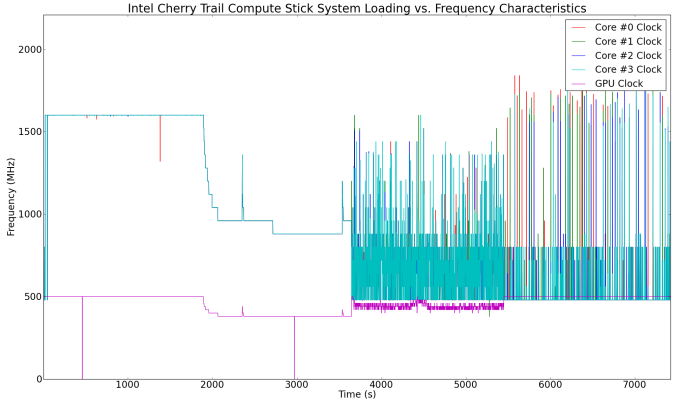
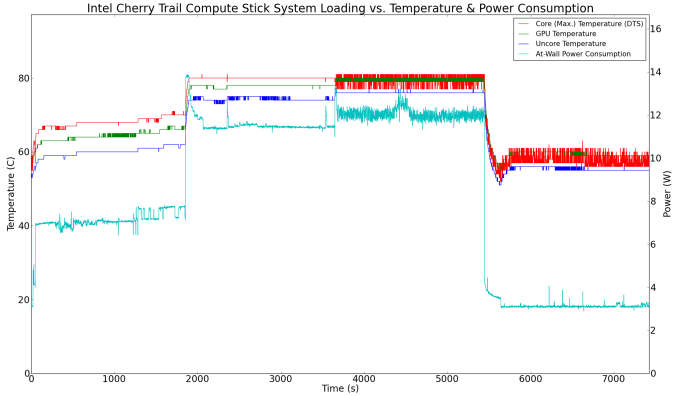
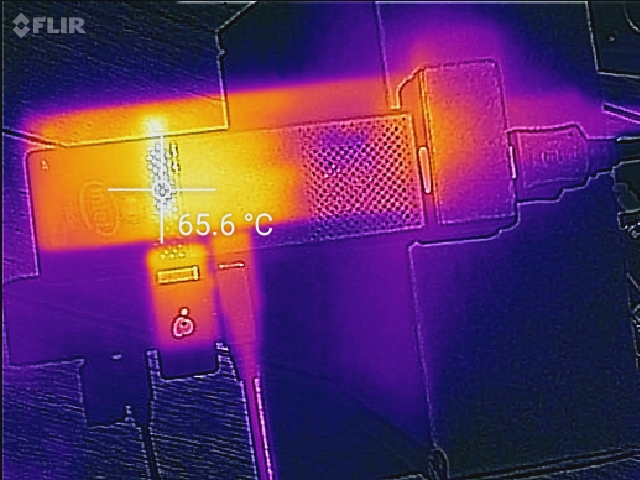
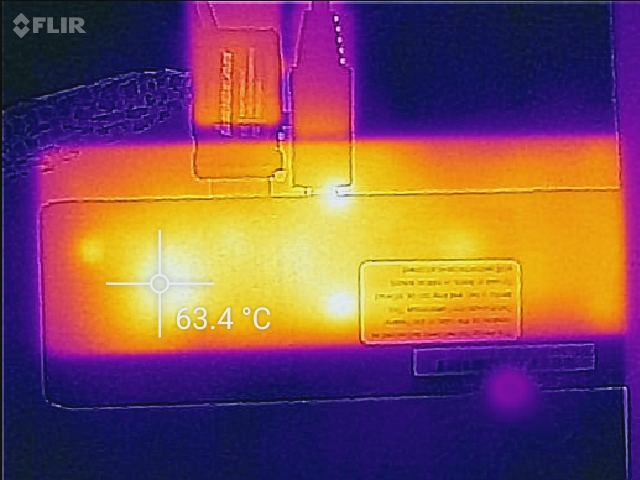








80 Comments
View All Comments
zepi - Thursday, January 14, 2016 - link
How about testing the H265 as well? I'm sure people will stumble upon it more and more as everyone wants to save in bandwidth costs.ddriver - Thursday, January 14, 2016 - link
Come on now, would it kill you to put 4 gigs of ram instead? That would significantly improve the usability.utroz - Thursday, January 14, 2016 - link
Probably has something to do with the fact that it has a 32bit version of windows so they skimped on the ram. Or they used 32bit windows because they skimped on the ram.. Either way it was a bad call. 64bit windows and 4GB of Ram or more are a must..nathanddrews - Thursday, January 14, 2016 - link
I think that's intentional in order to push people up into the Core m3 and m5 Compute Sticks.Blibbax - Friday, January 15, 2016 - link
Iirc it's because (if you're an OEM) you can get a cheaper Windows license for a low-end system like this.mkozakewich - Sunday, January 17, 2016 - link
2 GB is usable, at least. Windows takes up about 1 GB after boot, so the devices of 2014-2015 were horrible after the eMMC ran out of spare blocks.andychow - Thursday, January 14, 2016 - link
The cpu only supports max 2 gigs of ram. So 4 gigs is impossible.Samus - Friday, January 15, 2016 - link
It's also windows licensing issue. Until basically get windows 10 for free on these devices if they ship with <32 GB NAND and 2 GB RAM.Teknobug - Saturday, January 16, 2016 - link
The X5 Z8300 is a 64bit processor, just like Samus said, devices with 32GB storage and 2GB or less memory gets free Windows license.ddriver - Sunday, January 17, 2016 - link
So they crippled that poor product so it can get free spyware/spamware with it :)